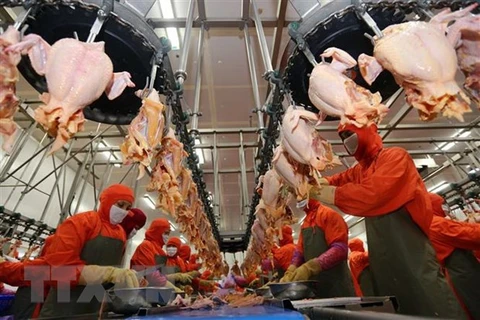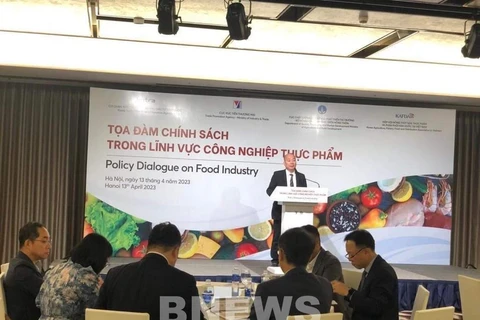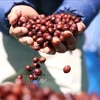Hanoi (VNA) – Vietnam’s food industry has seen signs of strong growth in the region thanks to the increasing income and consumption tendencies. The market has gradually provided more competitive products, dominating the domestic market and contributing to increasing exports.
People who are under 35 years old in Vietnam now account for about half of its 10-million population. Key products that play a significant role in the structure and value of industrial products in the country include wine, beer, milk and dairy products, vegetable oil, flour, and tobacco.
The number of Vietnamese enterprises operating in the food industry is about 5,083, an increase of 83.8% compared to 2019. This is a positive figure given the country was seriously affected by COVID-19 pandemic.
The food industry also has significant potential to increase international cooperation. The cooperation with big companies like Lotte Mart, E-Mart, Home Plus and CJ creates an opportunity for Vietnamese firms to bring products to shelves of supermarkets and shopping centres in the Republic of Korea, including Coupang and Gmarket, and gradually make inroads into the country's e-commerce market.
Over the past five years, food and beverage consumption in Vietnam increased by 9.68% and 6.66%, respectively. Of which, the fruit and vegetable processing sector accounted for 24.7% of the industry's revenue growth. It is expected to have the fastest growth potential thanks to export activity and domestic consumption. The sector experienced a rocket growth of 205%.
Notably, the food industry is also one of the key industries prioritised for development by the Vietnamese Government to 2025 with a vision to 2035, playing an important role in socioeconomic development.
In the past year, collaboration in the food industry between Vietnam and the RoK has been strengthened through several successful product promotion campaigns in both countries.
Octopus is Vietnam's main export to the East Asian market, with fresh and frozen octopus shipments accounting for 80% of total export value.
Currently, Vietnam and the RoK have signed four trade agreements, including the ASEAN-the RoK Free Trade Agreement (AKFTA), the Vietnam- RoK Free Trade Agreement (VKFTA), the Regional Comprehensive Economic Partnership (RCEP), the Comprehensive and Progressive Agreement for Trans-Pacific Partnership (CPTPP). These trade accords significantly contribute to promoting Vietnamese goods to the RoK market and vice versa.
The RoK Trade-Investment Promotion Agency (KOTRA) affirmed that after 30 years of cooperation, trade between Vietnam and the RoK has increased 161 times from 1992. Currently, the RoK is Vietnam’s biggest investorm in Vietnam with 79.2 billion USD in more than 9300 projects in various fields.
Notably, the expansion of bilateral trade as well as the increase in Vietnam's exports goes along with the trajectory of the RoK companies' expansion and penetration into the Vietnamese market.
In particular, Vietnam has become a key country and the RoK companies operating in Vietnam play an important role in purchasing raw materials produced in Vietnam for processing and export.
Meanwhile, the two countries' import and export of agricultural, forestry and fishery products show strong growth momentum. The RoK has opened up its agriculture sector based on the FTAs with ASEAN and Vietnam.
As a result, the RoK has become the fourth largest importer of Vietnam's agricultural, forestry and fishery products, after the US, China and Australia./.























